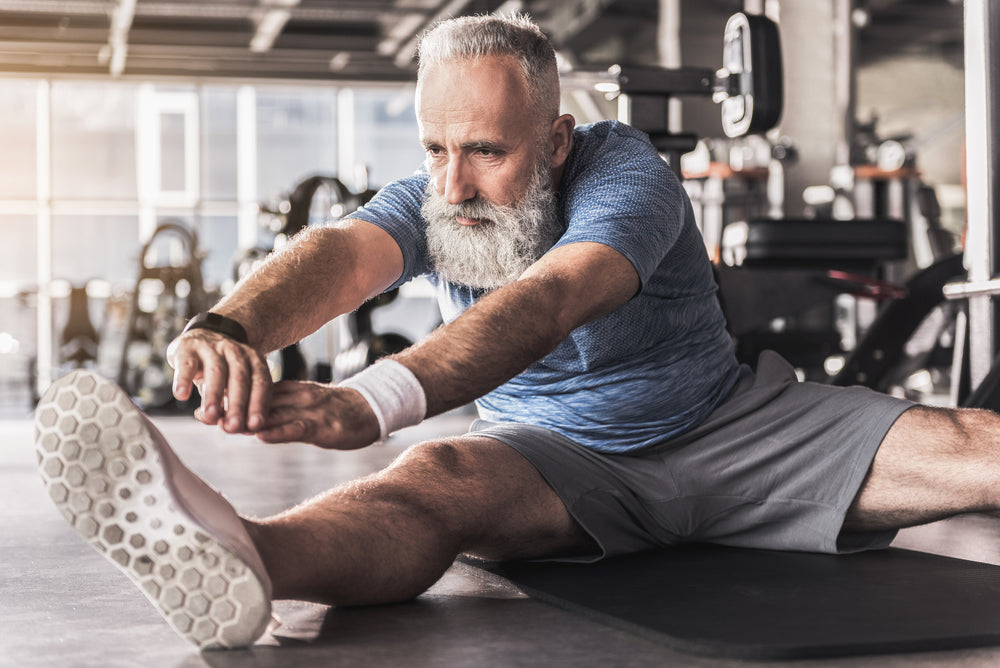
Autophagy & Fasting Benefits for Cellular Renewal and Longevity
Anyone who’s developed a scar from an injury or recovered from a nasty viral infection knows that the human body has a remarkable ability to heal itself. Our cells use a process called autophagy to repair the damage that leads to disease and hastens aging. Recent research suggests that harnessing the power of autophagy could be key to wellness and longevity.
Biohacking experts maintain that habits like intermittent fasting, exercise, and sauna and cold plunge therapy can initiate autophagy. This guide will help you understand how autophagy benefits health and what you can do to encourage it.
What is Autophagy?
Autophagy — or “self-eating” — is a process by which a damaged cell removes defective or unnecessary components and recycles them. Autophagy benefits the body by helping it operate more efficiently, stave off starvation, and heal itself.
Autophagy is a natural, multi-step process that begins when the body experiences stress.
- Autophagy-related proteins called ATGs cause structures called autophagosomes to form inside cells.
- Autophagosomes carry waste materials in cells to structures called lysosomes, which fuse with autophagosomes to form autolysosomes.
- Autolysosomes envelop cellular waste in membranes, break it down with enzymes, and eject bits called amino acids, the building blocks of proteins.
- These amino acids can then be recycled by cells.
Autophagy is crucial for well-being because, left unchecked, cellular waste can trigger inflammation and contribute to disease. Medical researchers are currently studying how modulating or encouraging autophagy might play a role in treating or preventing diseases like cancer, diabetes, heart disease, and neurodegenerative diseases.
Autophagy Benefits
Research suggests that autophagy may benefit your body in a variety of ways:
- Improving cellular function and promoting healthy cells
- Regulating metabolism and improving energy
- Supporting healthy weight loss
- Reducing inflammation throughout the body
- Helping the body fight infection and encouraging cellular repair
- Protecting the nervous system and brain
- Helping prevent a variety of diseases
- Potentially helping the body eliminate cancer cells
- Increasing longevity
When Does Autophagy Start?
Autophagy occurs when a lack of oxygen, nutrient deficit, or cellular damage signals to cells that the body needs to operate more efficiently. Most studies agree that autophagy kicks in after around 16-18 hours of fasting. Inducing autophagy through exercise may be a faster route: 30 minutes of high-intensity exercise will do the trick.
We’ll discuss tips for inducing autophagy below!
What is Autophagy Fasting?
The key to inducing autophagy is placing your body under stress. We often think of stress as a bad thing that we cannot control, but habits like fasting, exercise and cold water therapy can act as “good stressors” that create the right conditions for autophagy to occur.
Fasting forces the body to run through its available supply of glucose, a primary energy source derived from carbohydrates. Once glucose is depleted, the body begins to burn ketones, a source of energy derived from fats. Ketosis tells the body that starvation conditions have set in: that’s when autophagy begins.
The most popular form of autophagy fasting is a protocol called intermittent fasting (IMF). There are many IMF regimens to try: some people fast on alternate days, others limit their meals each day to a 4-8 hour window, and still others challenge themselves with longer fasts a few times per year. Longer fasts create the optimal conditions for autophagy, but even short ones can provide some of its benefits.
Benefits of Autophagy Fasting
Research suggests that autophagy fasting benefits your body in many ways:
- Supports healthy weight loss
- Regulates metabolism, which affects energy levels
- Encourages better insulin regulation
- Reduces inflammation and promotes muscle healing
- Improves cardiovascular health
- Protects the brain and nervous system
- Improves immune function
- Increases longevity
How Long to Fast for Autophagy
Though autophagy kicks into gear after 16-18 hours of fasting, recent research suggests that it reaches its peak at 36-72 hours. You read that right: that’s a day and a half to three days without food!
Not everyone can fast for days at a stretch. People with hypoglycemia and diabetes, some thyroid issues, and gallstones should talk to a doctor before considering a fast, as should anyone who takes medications.
Children, teenagers, pregnant or breastfeeding women, and people who struggle with eating disorders should refrain from intermittent fasting.
Even if you don’t have a condition like diabetes, let your doctor know if you’re planning to fast. They may have important advice about how long to fast for autophagy and how to stay hydrated and energetic during your fast.
How to Induce Autophagy
Now that you know how autophagy works, it’s time to learn strategies for making it work for you. Whether you’re a biohacking beginner or a seasoned pro, the guidelines that follow will help you initiate autophagy to encourage weight loss, wellness, and longevity.
Intermittent Fasting
While any type of calorie restriction can cause autophagy to occur, intermittent fasting is likely the most effective way to induce it throughout the body.
When fasting for autophagy, it’s best to avoid food for 16-18 hours. Beyond that, there are many ways to fast.
- Time-restricted feeding (TRF) involves timing your meals so you fast for 16-20 hours of each day. This regimen is good for fasting novices because it doesn’t involve a major change in your routine. Fasting for 16 hours, for instance, just requires skipping late-night snacks and breakfast.
- Alternate-day fasting is a more intensive approach to autophagy fasting. A popular variation is the 5:2 fast, where you eat normally five days per week, then fast for two.
- Longer fasts provide the best conditions for autophagy, but they can be difficult to maintain. It’s best to work up to fasts longer than 24 hours. On long fasts, be sure to hydrate and listen to your body, especially when exercising.
Autophagy and Exercise
Exercise breaks down damaged muscle cells that the body then builds back stronger. Autophagy plays a part in this process. Research suggests that 30 minutes of intense exercise is best for inducing autophagy, but a longer stretch of lower-intensity movement can also work.
While fasting induces autophagy throughout the body, exercise removes damaged cell components primarily in the muscle tissue that is placed under stress. For that reason, it’s best to choose exercises like high-intensity interval training (HIIT) that engage the whole body.
Pairing short fasts with exercise may be an especially effective way to maximize autophagy weight loss.
Adopt a Ketogenic Diet
A ketogenic diet involves deriving 75% or more of your daily calories from fat while keeping carbohydrate consumption to a minimum. Like fasting, the keto diet encourages the body to derive its energy from ketones, or fats, rather than from carbohydrates. These ketones trigger autophagy throughout the body.
While fasting is the most effective way to induce autophagy, following a ketogenic diet might be easier for some people than forgoing food altogether. The keto diet also encourages weight loss by optimizing the body’s proportion of different types of fats.
Foods to Eat (and What to Avoid)
To encourage autophagy, it’s important to eat the right foods before and after a fast.
Compounds called polyphenols found in many plants can initiate autophagy. To increase your polyphenol intake, include these foods in your diet:
- Green tea
- Red wine
- Soybeans
- Nuts
- Onions
- Apples
- Berries
- Turmeric
When breaking a fast, a small, high-protein meal will satiate you and bring you back to baseline. Consider the following options, as well:
- Bone broth or miso soup
- Lean proteins like soy, fish, or chicken
- Healthy fat sources like avocado or eggs
- Fermented foods like kimchi, sauerkraut, or yogurt
Because autophagy only occurs when the body’s glucose reserves are low, high-sugar foods will slow it down. Research suggests that protein drinks can also inhibit the process.
Take the Plunge and Improve Your Total Health Today!
Autophagy is your body’s way of taking out the trash on a cellular level. It helps your cells work more efficiently and effectively, which has a wide variety of benefits for your body. You can induce autophagy by incorporating “good stressors” into your wellness routine.
Sauna and cold plunge therapy together can help you reach your wellness goals by improving your body’s response to stress. Plunge has a tub for every budget! Beginners can give cold plunging a try with the Plunge Pop-Up Ice Bath, and experts can take their cold plunge journey to the next level with the luxe Plunge All-In. Financing is available for all Plunge products, and purchases are HSA/FSA eligible.
Medical Disclaimer: The information contained in this post is for informational and educational purposes only. It is not intended to provide medical advice or to take the place of such advice or treatment from a personal physician. All readers/viewers of this content are advised to consult their doctors or qualified health professionals regarding specific health questions or before embarking on any new health or wellness routine, including saunas and cold plunging. Neither the author(s) nor the publisher of this content take responsibility for possible health consequences of any person or persons reading or following the information in this educational content. All viewers of this content, especially those taking prescription or over-the-counter medications, should consult their physicians before beginning any cold plunging routine or other health or wellness program.







